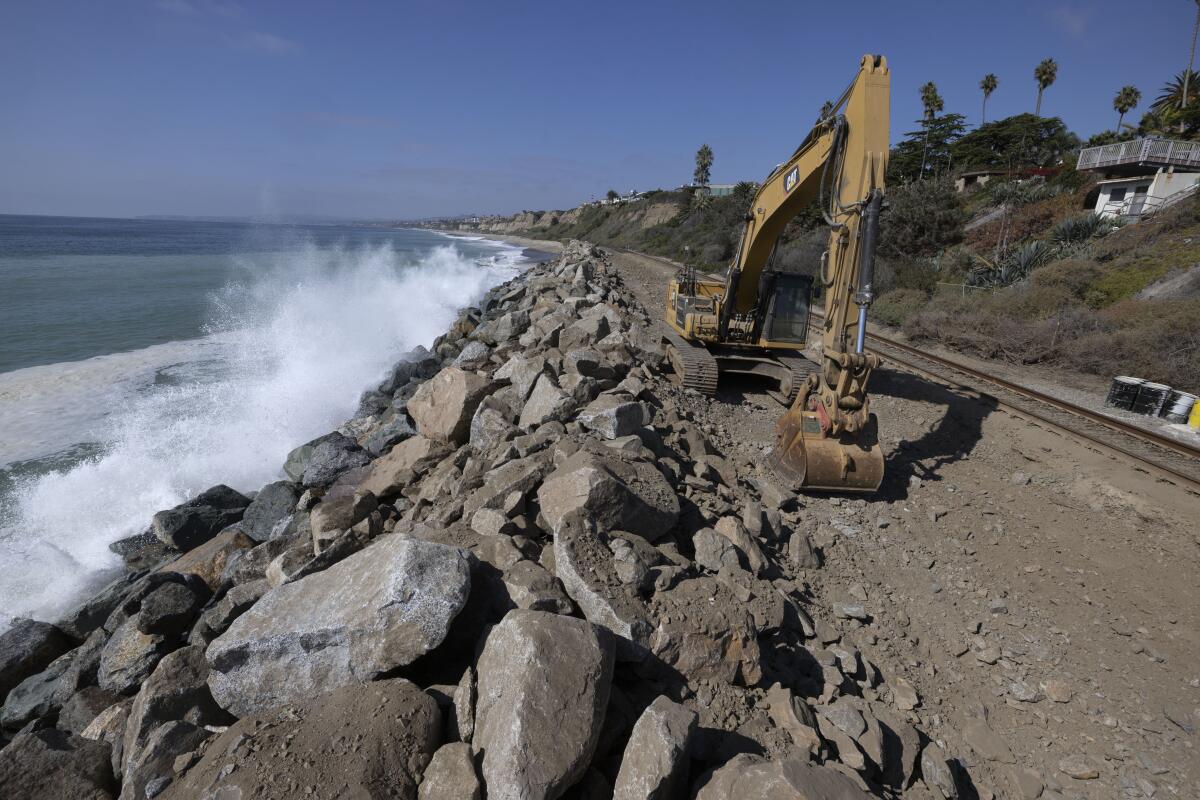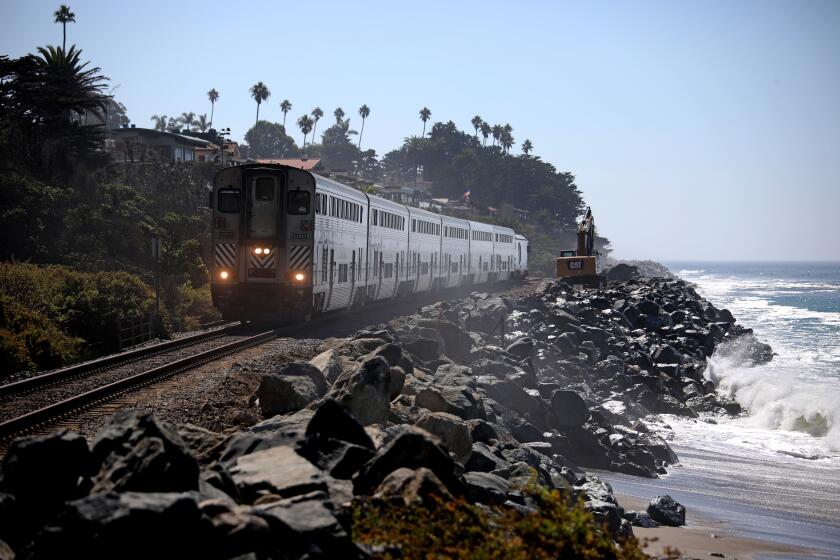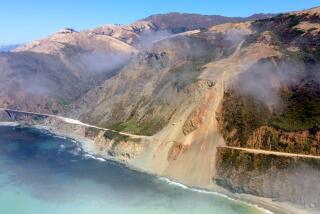Bluff continues to move at San Clemente rail site where repairs shut down service to San Diego

Excavation is expected to start Friday for the installation of ground anchors to stop the still-sliding slope beneath the railroad tracks in San Clemente, the Orange County Transportation Authority said.
Metrolink and Amtrak suspended passenger rail service Sept. 30 between San Diego and Orange counties after movement was detected in the area of an old landslide just north of the county line. The service suspension is expected to continue through the end of the year while repairs are underway.
âVery slight incremental movement is still being recorded daily,â OCTA spokesman Eric Carpenter said Wednesday, although the rainfall early in the week did not appear to affect the slide.
BNSF freight trains continue to operate through the repair area, although with reduced frequency and speeds.
The 140-year-old coastal rail line is the only viable route for passenger and freight trains between San Diego and the rest of the United States. The 350-mile line between San Diego, Los Angeles and San Luis Obispo, known as the Lossan corridor, is one of the nationâs busiest rail routes.
Officials with Metrolink are still responding to recent movement detected in the railwayâs foundation near San Clemente after Tropical Storm Kay.
The tracks move laterally at a rate of a fraction of an inch daily as measured by inclinometers placed in the ground at the San Clemente slide. A total of about 28 inches of movement has been detected since motion was first discovered in September 2021.
Passenger service was suspended for about two weeks at the time, while construction workers added 18,000 tons of boulders to the beach revetment that holds back the slope and moved the tracks back to their original location. That work stopped the slide until new movement was detected after rains in September of this year.
OCTA approved a contract in October with Condon-Johnson & Associates to install the anchors that are intended to stop the slide.
âClearing of vegetation and any other debris in the construction area has been completed,â Carpenter said. The next step is to install the anchors, which are large, flat plates held by steel cable anchors drilled into the bedrock.
More to Read
Sign up for Essential California
The most important California stories and recommendations in your inbox every morning.
You may occasionally receive promotional content from the Los Angeles Times.












